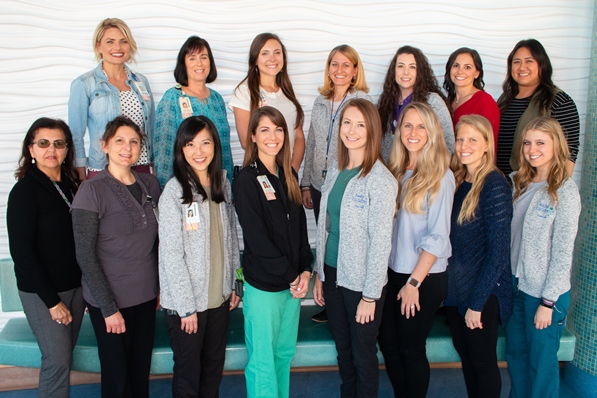“Radiology,” “chemotherapy” and “dialysis” are big terms for little patients to understand, and even bigger medical experiences to go through. So, when anxiety strikes before a procedure or things get overwhelming during a hospital stay, a very special kind of health care professional is there to help calm fears, make sense of it all, and even inspire fun and laughter — child life experts.
At Rady Children’s Hospital-San Diego, our Child Life Services team comprises 15 certified child life specialists (C.C.L.S.) and two child life assistants. Fun fact: Child Life Services is one of the programs at the Hospital that is funded entirely through donations, a sure sign of its value and effectiveness. Members of the team are available to patients, parents and siblings seven days a week in inpatient and outpatient areas. Just some of the areas they can visit are outlined below — their reach throughout the Hospital is broad!
- Peckham Center for Cancer & Blood Disorders
- Emergency Department (ED)
- Comprehensive Kidney Care Center
- Rehabilitation Medicine Center
- Warren Family Surgical Center (Outpatient Surgical Services and Inpatient Surgical Care Unit)
- Pediatric intensive care unit (PICU)
- Cardiovascular intensive care unit (CVICU)
- The pulmonary unit of the Division of Respiratory Medicine
- Radiology Department
- Medical Rose Unit areas including the following:
“Our staff is there to serve the unique psychosocial needs of our patients and their families,” explains Jacqui Small, L.C.S.W., manager of medical social work and child life. “Child life specialists can help patients and families cope with the hospital experience, alleviate stress and anxiety, and understand their diagnosis and treatments in an approachable way.” To become a C.C.L.S., candidates must earn a bachelor’s or master’s in child life, child development or a related field; complete a 120-hour practicum and 600-hour internship; and pass a national certification exam.
On the floors of Rady Children’s, Child Life Services can support patient families in the following ways:
- Offer psychological tools, pre-surgery education and tours to help patients and their loved ones get familiar with the hospital environment before admission.
- Hold developmentally appropriate discussions about the child’s condition and care plan. For example, rather than saying, “IV,” a specialist may say, “small bendy or flexy straw;” or use something along the lines of “medicine that will help you fall into a deep sleep” instead of “put you to sleep.” This can work to mitigate feelings of confusion, fear or being overwhelmed. Staff can also help explain death and dying and offer bereavement support to families.
- Provide education and coping techniques for managing treatments, side effects and hospital stays. Patients, parents and siblings can all take part in this, and the child life team will tailor their approach to each person or family’s needs.
- Engage in medical and therapeutic play, which is open to both patients and siblings. This approach helps to facilitate the expression of feelings, promotes a sense of control, and helps kids gain a mastery and understanding of medical procedures and health. It’s also a great opportunity to continue healthy growth and development, interact with peers, and divert attention from stress. Depending on preference, this can be in a patient’s room, or in one of the Hospital’s five activity rooms.
- Visit patients’ schools for presentations that will help classmates understand a child’s diagnosis and hospitalization and support them before and during their return to school.
- Connect parents with education and resources on child development and how a complex health care experience may affect their child.
This Child Life Month is a great time to learn more about the meaningful work this dedicated unit does each and every day. Keep reading to see what a few members of the team have to say about what inspired them to pursue a career in child life and what they find most fulfilling about their jobs.
Taylor Keightley, C.C.L.S., Surgical Services
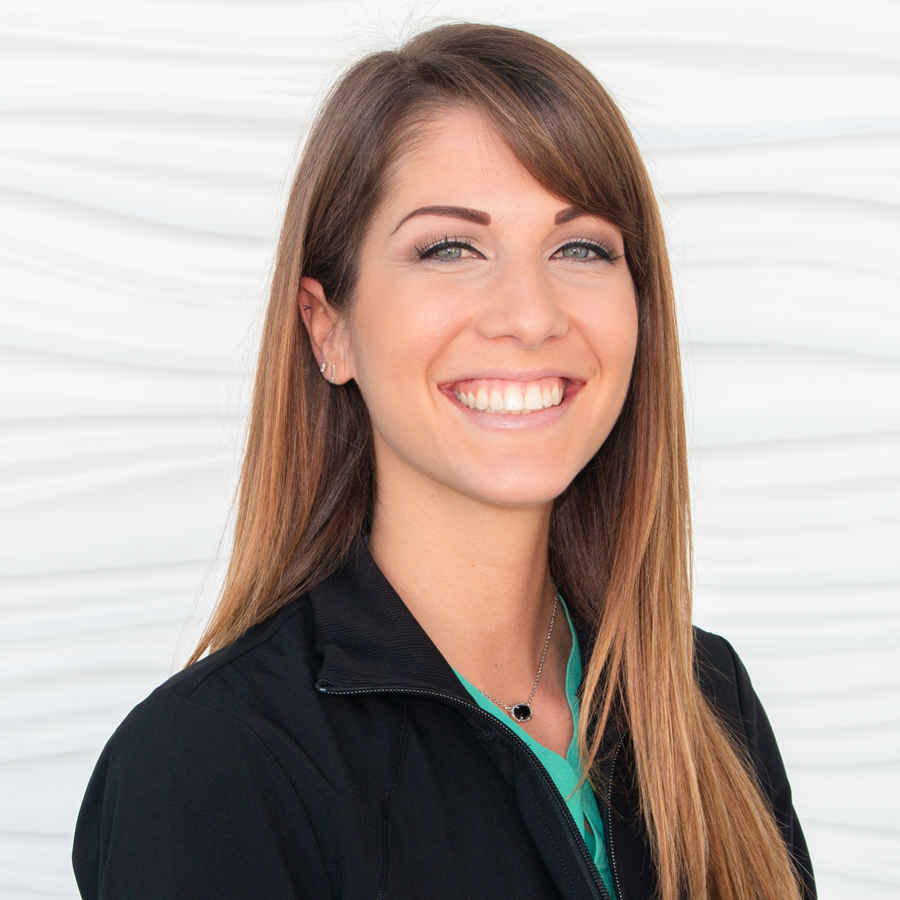
After deciding against a nursing career and searching for a field I was passionate about, my college advisor asked me to describe my dream job. This led me to learn about child life, and I was sold. I majored in early childhood and family studies and have been a C.C.L.S. for almost four years. I began my career in the ED at Rady Children’s. Then, in Jan. 2017, I launched child life in Surgical Services. I think Surgical Services can potentially be an intimidating and stressful place, and I aim to provide normalcy and comfort to families as they enter through our doors.
I love making child life an active participant in my unit, and have implemented a number of initiatives to help staff engage with us, in turn helping everyone collaborate on patient cases. These include emailing out Child Life Tips of the Month, which are focused on topics such as the importance of play, child-friendly language when discussing conditions and care, and explaining anesthesia. I also started giving out an award called “Friend of Child Life” to staff who are magnificent advocates for and supporters of child life as a whole.
One of the most rewarding parts of my job is seeing children overcome their fears and anxieties and telling them that they can do it. There have been many times where I walked into a room and a patient is tearful because they are scared and feel like they can’t go through with surgery. Once I explain who I am and what I can do to help them, they usually begin to return to baseline, and we then make a plan for managing their surgery and related emotions. I believe that this not only teaches them positive coping skills in the moment, but also provides them helpful tools to overcome trials in an effective way whenever life gets tough in the future.
Carissa Menard, C.C.L.S., Rehabilitation Medicine and Pulmonary Care
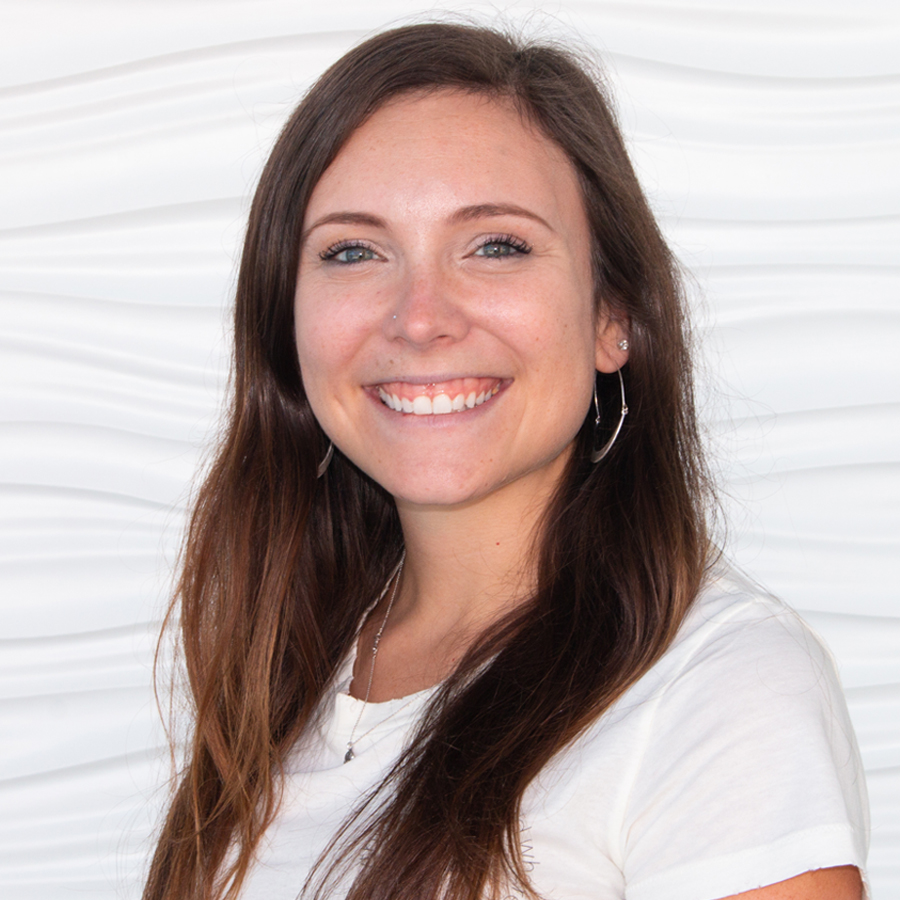
I have been a child life specialist at Rady Children’s for almost three years. I fell in love with this career first as a patient. I had leukemia as a teenager and had two child life specialists that worked closely with me for a few years during my treatment. Through my personal experience, I witnessed the impact of child life on me and my family. Some days, they were the only ones I would allow in my room. They allowed me to feel empowered and understood, and they consistently supported my emotional and psychosocial needs. Their impact lasted beyond the hospital and it was after this experience I felt inspired to empower and support others in the hospital setting.
I currently have a position in which my time is split between the pulmonary unit and the Rehabilitation Medicine Center a few days a week. You will often see me running up and down between floors. My favorite part about my job is empowering patients to be involved in their health care experience. I love to see when a child develops the confidence to complete a difficult task or use a new coping skill on their own. Even though fear might be demonstrated, it is a very special experience to witness them feel proud of themselves instead of defeated after a difficult procedure, or feel excited to try something new to make a previously difficult medical intervention easier. I love seeing this shift happen in parents as well. Empowering parents to utilize coping and soothing techniques in the hospital, along with giving them a role in supporting their child’s needs, allows so many parents to feel more confident in their ability to help their child during their hospital stay.
Many of my rehabilitation patients have endured a significant trauma to cause their injury, or may have cognitive, mobility or physical changes that will affect them far beyond their hospitalization. Because of this, it’s really important to focus on coping and psychosocial needs both at the Hospital and after they go home. Some examples of unique interventions that we can do together include creating a plan to discuss their hospitalization and any changes with their friends, or working with siblings on how to interact or play with their brother or sister again if significant neurological changes have occurred. I also think a great example of what we do is the Love Your Lungs program I use with our cystic fibrosis (CF) patients. It is an incentive program for patients to earn tokens for completing the many tasks required to manage CF, which can eventually earn a large prize. This program has been helpful in managing behavioral needs, increasing motivation and participation in care, and giving these kiddos a chance to have something to look forward to while admitted.
Rachel Pedinoff, C.C.L.S., Pediatric Intensive Care Unit and Cardiovascular Intensive Care Unit
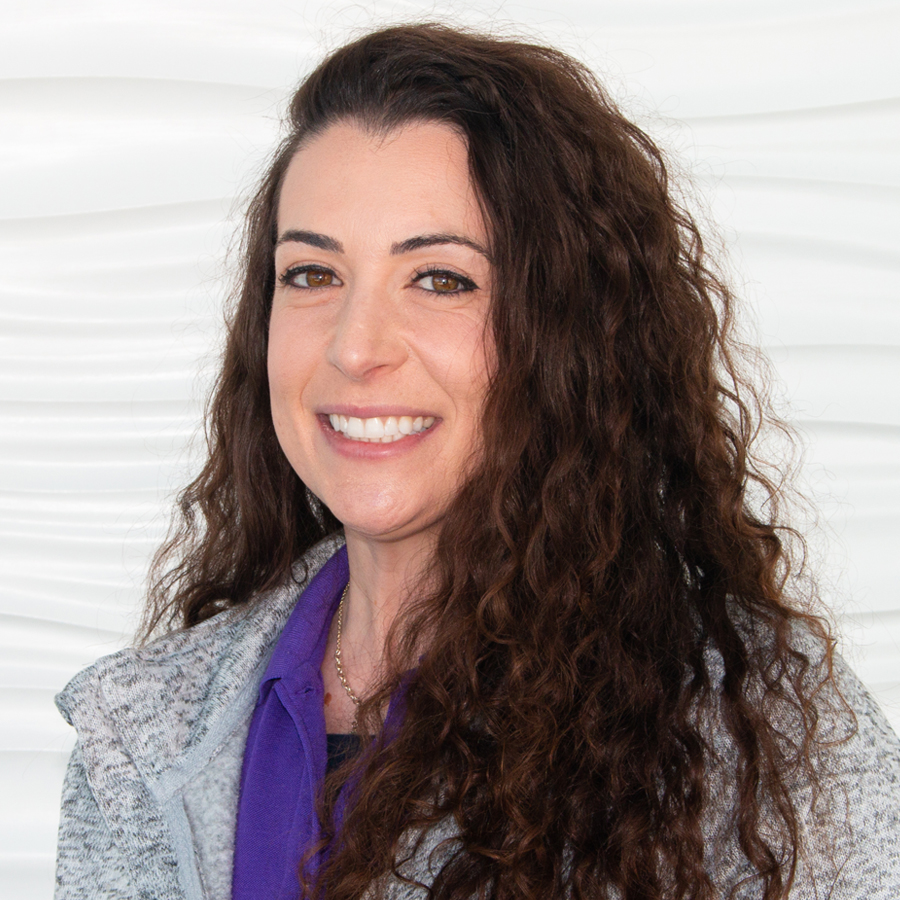
I have been a C.C.L.S. for six years, and have been at Rady Children’s for five! I have been working with medically fragile children for more than 12 years. As a child, I was hospitalized frequently due to a chronic illness. I know how traumatic the hospital environment can be to children and their families, and I became a C.C.L.S. because I want to help make the hospital experience good for everyone. I enjoy seeing patients understand the hospital environment through education, and feel more comfortable during their admission through therapeutic play.
I work in the PICU/CVICU, where patients are typically very sick. The best part of my job is working with the children and their families. I like to provide education on new diagnosis and medical equipment, and support patients for procedures. My favorite part is coming up with new fun ways to teach children about their bodies and conditions. I love seeing a patient playing and having fun while admitted to the hospital. I also work a lot with patients’ siblings and family members. I help them understand and cope with what is happening to their sick family member. I use different techniques to help promote relaxation and distraction, and recommend coping skills for long-term illness, injury and/or end-of-life.
Kelsey Tidwell, C.C.L.S., Emergency Department
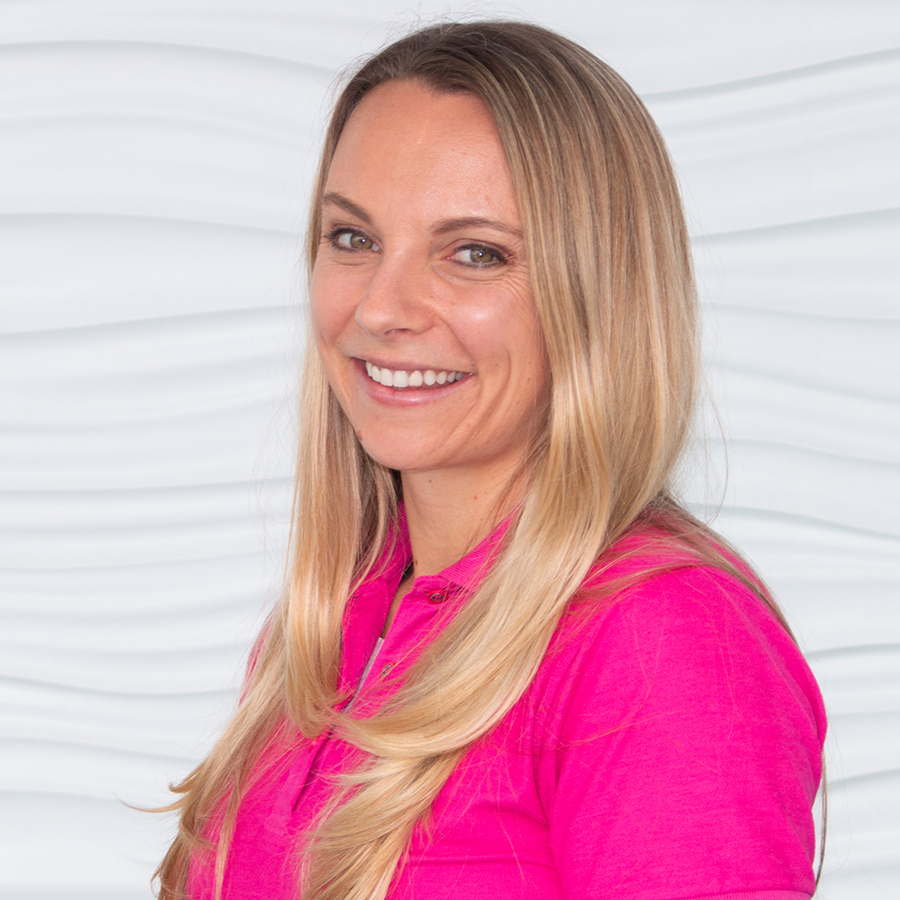
I have always had a passion for working with children. I originally earned my degree in recreation management and youth leadership, which led me to running a gymnastics program, coaching high school lacrosse, working at a children’s museum, and eventually to running a before- and after-school program. Although I enjoyed each of my jobs, I knew that none of them were going to be my career. I began taking courses to further my knowledge of child development while exploring the options of either obtaining a teaching degree or a degree in nursing when I was introduced to child life. It was then that I had my “ah ha” moment and realized that this was the career I had been searching for. It combined
my passions for working with children through play, teaching and the medical field.
I have been a C.C.L.S. for just under five years. I started working at Rady Children’s on a contract basis and was then hired on full-time. I reintroduced Child Life Services into the ED about four years ago, and am still there — I absolutely love this unit. Often times the first experience that a child has with the Hospital is through the ED. The unknown can be very scary to both children and teens. I love being able to provide preparation and support for patients and see how their anxiety decreases when they know exactly what to expect. Although I would love to be able to help each child that walks through the ED doors, I am available to help support many of our most anxious patients during their procedures.
I also think one of the things that makes this position unique is that we are able to meet with patients who have just been given a new diagnosis. We can let them know that there will be another C.C.L.S. that will follow them through their hospitalization and tell them about the amazing things that the Hospital has to offer, such as playrooms, special events and therapy dog visits!
Madeline Zinngrabe, C.C.L.S., Radiology
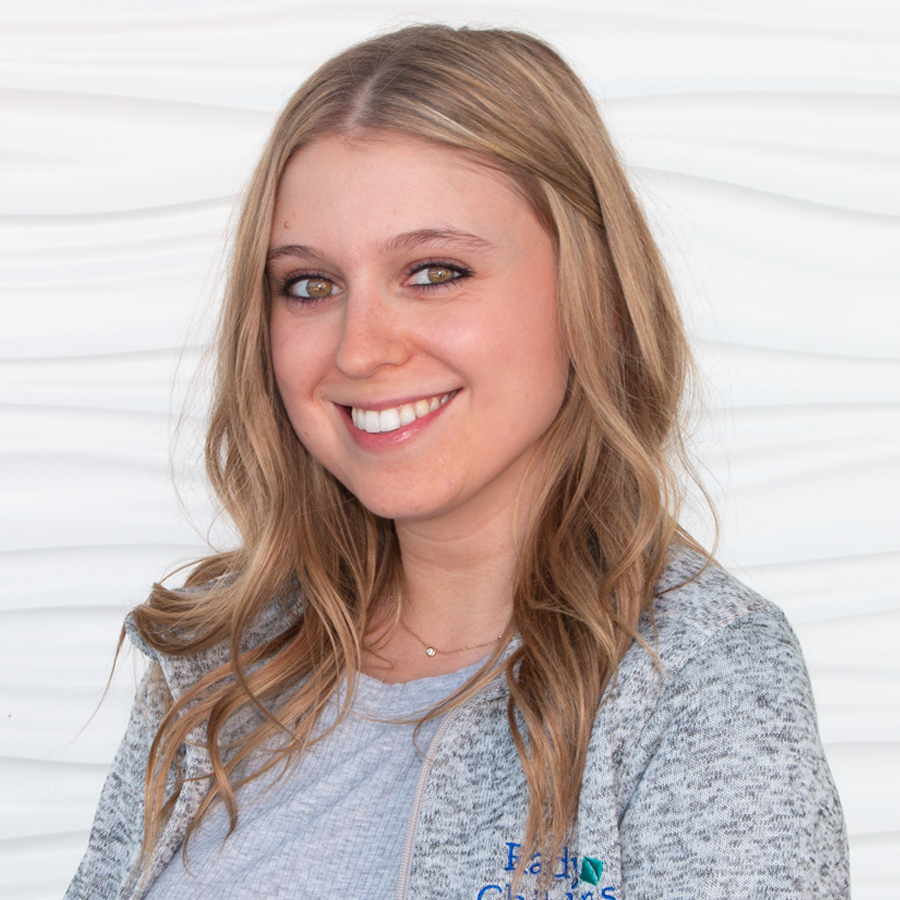
I am currently the full-time child life specialist in the Radiology Department, and have been a C.C.L.S. for the past year-and-a-half. Working with children has always been a passion of mine, and once I discovered the child life field, I knew it was the job I have always imagined pursuing. I was instantly drawn to the medical field and was interested in learning more about becoming a C.C.L.S., which is why I obtained my master’s degree specifically in child life.
Being a C.C.L.S. in an outpatient setting makes my child life role unique from those of my colleagues in an inpatient setting. I am able to work with patients, from start to finish, during procedures to assist with coping and distraction, as most are typically awake and need support throughout the exam. My favorite part of this job is being able to not only work with all ages of children, but to work with the parents and siblings during their visit. Being able to act as an advocate for the whole family is one of the most enjoyable parts of being a child life specialist.
